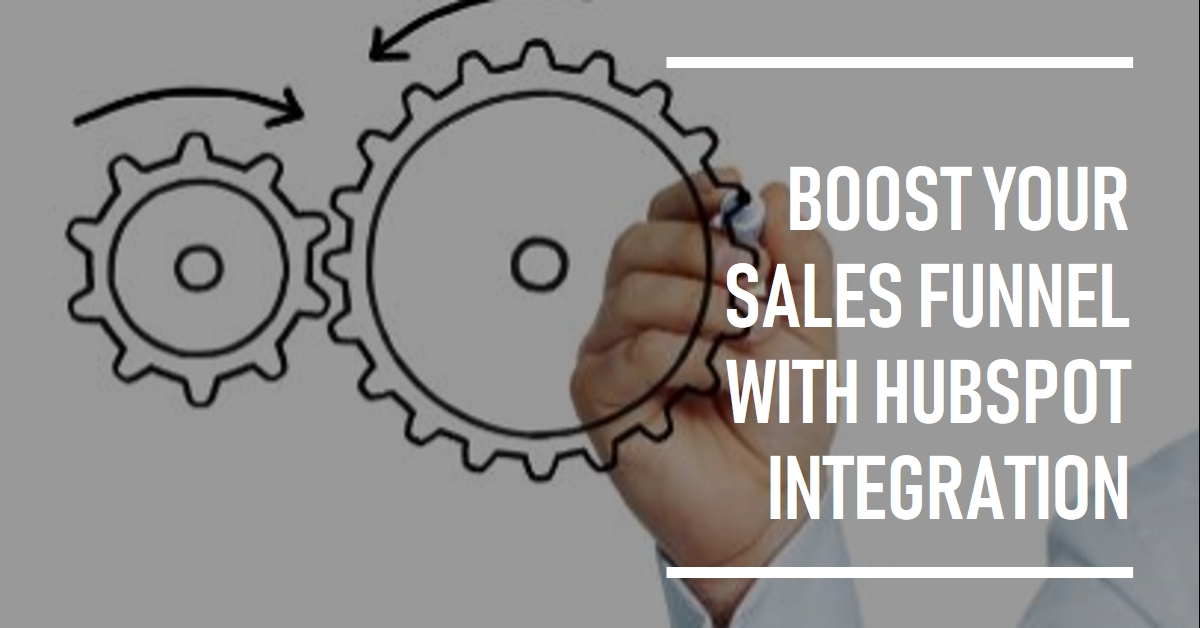Are you struggling to optimize your sales funnel and increase your conversion rates?
Well, you might not know this, but integrating Hubspot into your sales process can be the game-changer you’ve been looking for.
With its powerful CRM features and automation capabilities, Hubspot can supercharge your sales funnel and help you achieve your revenue goals.
But how exactly can it do that?
Stay tuned to find out how Hubspot integration can revolutionize your sales strategy and take your business to new heights.
Benefits of Hubspot Integration
By integrating Hubspot into your sales funnel, you can unlock a multitude of benefits that will revolutionize your approach to customer acquisition and retention. Hubspot’s robust suite of tools and features empowers you to streamline your sales process and achieve unprecedented results.
First and foremost, Hubspot provides you with a centralized platform to manage all aspects of your sales funnel. From lead generation to closing deals, Hubspot keeps everything organized and easily accessible. This eliminates the need for multiple disjointed systems and saves you valuable time and effort.
Additionally, Hubspot offers powerful analytics and reporting capabilities. You can gain deep insights into your sales performance, track key metrics, and identify areas for improvement. With this data-driven approach, you can make informed decisions and optimize your sales strategy for maximum effectiveness.
Furthermore, Hubspot’s integration with other software and tools allows for seamless automation and efficiency. You can automate repetitive tasks, such as follow-ups and lead nurturing, freeing up your time to focus on building relationships and closing deals. This level of automation not only increases productivity but also ensures that no leads slip through the cracks.
Setting up Hubspot in Your Sales Process
To effectively set up Hubspot in your sales process, begin by integrating the platform into your existing systems and workflows. By doing so, you can streamline your sales operations and gain a holistic view of your customers. Hubspot offers seamless integrations with popular CRM systems, email marketing tools, and analytics platforms, allowing you to consolidate all your sales data in one place. This integration enables you to track customer interactions, analyze data, and make data-driven decisions to optimize your sales funnel.
Once you have integrated Hubspot into your systems, it’s time to align your sales team with the platform. Provide comprehensive training to ensure that your team understands how to leverage Hubspot’s features effectively. Encourage them to use the platform consistently and track their progress through key performance indicators (KPIs).
Another crucial step is to automate repetitive tasks using Hubspot’s automation capabilities. By automating tasks like lead nurturing, follow-ups, and email campaigns, your sales team can focus on building relationships and closing deals. This not only saves time but also increases efficiency and effectiveness.
Lastly, regularly analyze your sales data using Hubspot’s reporting and analytics tools. Identify trends, track conversion rates, and measure your sales team’s performance against your goals. This data-driven approach allows you to make informed decisions and continuously improve your sales process.
Leveraging Hubspot’s CRM Features
Leverage Hubspot’s CRM features to gain valuable insights into your customers’ needs and behaviors, allowing you to strategically tailor your sales approach for maximum impact.
- 360-degree view: Hubspot’s CRM provides a comprehensive view of each customer, consolidating all interactions, deals, and communication history in one place. This enables you to understand your customers better and personalize your approach accordingly.
- Lead scoring: With Hubspot’s CRM, you can assign scores to leads based on their engagement level and behavior. This helps you prioritize your efforts and focus on the most promising leads, increasing your chances of conversion.
- Sales pipeline management: Hubspot’s CRM allows you to track your sales pipeline, from initial contact to closed deal. This visibility enables you to identify bottlenecks, optimize your process, and close deals faster.
- Automated email sequences: Use Hubspot’s CRM to automate personalized email sequences based on customer behavior. This ensures timely and relevant communication, nurturing leads and moving them further down the sales funnel.
- Sales analytics: Hubspot’s CRM provides detailed analytics and reporting on sales performance, allowing you to identify trends, measure the success of your strategies, and make data-driven decisions.
Automating Lead Nurturing With Hubspot
With Hubspot’s CRM features, you can take your lead nurturing efforts to the next level by automating personalized communication that drives engagement and accelerates conversions. By leveraging Hubspot’s automation capabilities, you can save time and resources while ensuring that your leads receive the right message at the right time.
Automating lead nurturing allows you to create targeted and relevant content that resonates with your leads. With Hubspot, you can segment your leads based on their interests, behavior, and demographics, enabling you to deliver personalized messages that address their specific needs and pain points. This level of customization not only increases engagement but also builds trust and credibility with your audience.
Furthermore, by automating lead nurturing, you can nurture your leads throughout the entire buyer’s journey. Hubspot’s CRM allows you to create automated workflows that send timely follow-up emails, deliver relevant content, and even schedule personalized sales calls. This ensures that your leads stay engaged and progress smoothly through the sales funnel.
In addition to saving time and resources, automating lead nurturing with Hubspot provides you with valuable data and insights. Hubspot’s CRM tracks and analyzes the performance of your automated campaigns, allowing you to optimize and refine your strategies based on real-time data. This data-driven approach empowers you to make informed decisions and continuously improve your lead nurturing efforts.
Improving Sales Efficiency With Hubspot
By integrating Hubspot into your sales process, you can streamline operations, optimize efficiency, and drive measurable results. Here are five ways you can improve sales efficiency with Hubspot:
- Automate repetitive tasks: Hubspot allows you to automate time-consuming tasks like data entry, follow-up emails, and lead scoring. By automating these tasks, you can free up valuable time for your sales team to focus on building relationships and closing deals.
- Centralize customer data: With Hubspot, you can consolidate all your customer data in one place. This means no more searching through multiple systems or spreadsheets to find the information you need. Having a centralized database enables your sales team to access real-time customer insights, track interactions, and personalize their approach.
- Streamline communication: Hubspot’s communication tools, such as email templates and sequences, make it easy to stay in touch with prospects and customers. You can automate email follow-ups, schedule reminders, and track engagement. This ensures that no leads fall through the cracks and helps your team stay organized and efficient.
- Track and analyze performance: Hubspot provides detailed analytics and reporting capabilities, allowing you to measure the effectiveness of your sales efforts. You can track key metrics like conversion rates, deal velocity, and revenue generated. By analyzing this data, you can identify areas for improvement and make data-driven decisions to optimize your sales process.
- Collaborate effectively: Hubspot’s collaborative features enable seamless communication and collaboration between your sales and marketing teams. You can share lead intelligence, track campaign performance, and align your strategies. This collaboration fosters a more efficient and effective sales process, ensuring that your teams are working towards the same goals.
Tracking and Analyzing Sales Performance With Hubspot
When it comes to tracking and analyzing your sales performance, Hubspot integration offers powerful tools to help you gain valuable insights.
Sales data visualization allows you to easily see and understand your sales metrics, helping you identify trends and areas for improvement.
With performance analytics tools, you can measure the effectiveness of your sales strategies and make data-driven decisions to optimize your conversion rates.
Sales Data Visualization
Visualizing your sales data is a strategic and data-driven way to track and analyze your sales performance using Hubspot. By visualizing your sales data, you can gain valuable insights into your sales funnel and make data-driven decisions to optimize your sales process.
Here are five reasons why sales data visualization is essential for supercharging your sales funnel:
- Identify bottlenecks: Visualizing your sales data allows you to identify bottlenecks in your sales process and take proactive measures to remove them.
- Monitor sales performance: With sales data visualization, you can easily track and monitor the performance of your sales team and individual sales reps.
- Identify trends and patterns: Visualizing your sales data helps you identify trends and patterns in your sales process, enabling you to make data-driven predictions and forecasts.
- Measure sales effectiveness: By visualizing your sales data, you can measure the effectiveness of your sales strategies, campaigns, and initiatives.
- Improve decision-making: Sales data visualization provides you with clear and concise insights, empowering you to make informed decisions that drive sales growth.
Embrace the power of sales data visualization and unlock the potential of your sales funnel with Hubspot integration.
Performance Analytics Tools
To enhance your sales performance with Hubspot, utilize performance analytics tools for tracking and analyzing your sales data. These tools provide valuable insights into your sales funnel, allowing you to identify areas of improvement and make data-driven decisions.
With performance analytics, you can track key metrics such as conversion rates, deal stages, and revenue generated. By analyzing this data, you can identify bottlenecks in your sales process, pinpoint areas where your team may need additional training or support, and optimize your sales strategies for maximum effectiveness.
Additionally, performance analytics tools enable you to create customizable reports and dashboards, providing real-time visibility into your sales performance. This empowers you to make informed decisions, measure the success of your sales efforts, and ultimately drive better results.
With Hubspot’s performance analytics tools, you have the freedom to take control of your sales process and supercharge your sales funnel.
Conversion Rate Optimization
Maximize your sales potential by harnessing the power of conversion rate optimization with Hubspot’s tracking and analyzing capabilities. With Hubspot, you can gain valuable insights to enhance your sales funnel and drive more conversions. Here are five ways Hubspot can help you optimize your conversion rates:
- Track and analyze customer behavior: Hubspot allows you to monitor every step of your customers’ journey, from the moment they land on your website to the point of purchase. This data helps you identify bottlenecks and make data-driven improvements.
- A/B testing: Experiment with different variations of your landing pages, calls to action, and email campaigns to see what resonates best with your audience. Hubspot’s A/B testing feature enables you to optimize your content and increase conversions.
- Personalized content: Tailor your messaging to specific segments of your audience using Hubspot’s powerful segmentation tools. Delivering personalized content increases engagement and conversion rates.
- Lead scoring: Hubspot’s lead scoring system helps you prioritize and focus on leads that are most likely to convert. By assigning scores based on specific criteria, you can allocate your resources effectively and maximize your conversion rates.
- Continuous improvement: Use Hubspot’s analytics to track your progress over time and identify areas for improvement. By constantly analyzing your sales performance, you can make data-driven decisions and optimize your conversion rates.
Harness the power of conversion rate optimization with Hubspot integration and watch your sales soar.
Integrating Hubspot With Other Sales Tools
Integrating Hubspot with other sales tools can streamline your sales processes, increase lead conversion rates, and enhance your data analytics capabilities.
By seamlessly connecting Hubspot with tools like CRM software and email marketing platforms, you can automate tasks, eliminate manual data entry, and gain valuable insights into your sales funnel.
This integration empowers your sales team to work more efficiently, make data-driven decisions, and ultimately drive revenue growth.
Streamline Sales Processes
By seamlessly integrating Hubspot with other sales tools, you can streamline your sales processes and boost your efficiency and productivity. Here are five ways you can achieve this:
- Automate data syncing: Syncing data between Hubspot and other sales tools eliminates the need for manual data entry, saving you time and reducing errors.
- Centralize customer information: Integrating Hubspot with CRM allows you to have a unified view of your customers, enabling you to provide personalized and targeted sales strategies.
- Enable real-time notifications: Receive instant notifications when leads or prospects take specific actions, allowing your sales team to promptly follow up and close deals faster.
- Track sales activities: Integrating Hubspot with your sales tools provides valuable insights into your team’s activities, helping you identify areas for improvement and optimize your sales processes.
- Improve collaboration: With Hubspot integration, your sales and marketing teams can easily share data, collaborate on campaigns, and align their efforts for more effective lead nurturing.
Integrating Hubspot with other sales tools is a strategic move that empowers you to streamline your sales processes, drive efficiency, and achieve better results.
Increase Lead Conversion
To supercharge your sales funnel and maximize lead conversion, leverage the power of Hubspot integration with other sales tools to drive targeted and personalized sales strategies.
By integrating Hubspot with tools like email marketing platforms, customer relationship management (CRM) systems, and social media management tools, you can enhance your ability to capture and nurture leads effectively.
With Hubspot’s robust features and seamless integration, you can automate lead nurturing workflows, track customer interactions, and gain valuable insights into buyer behaviors.
This data-driven approach allows you to tailor your sales efforts to each prospect’s specific needs and preferences, increasing the likelihood of conversion.
With Hubspot integration, you can take your lead conversion rates to new heights, enabling you to achieve greater success and freedom in your sales efforts.
Enhance Data Analytics
Leverage the power of Hubspot integration with other sales tools to enhance your data analytics and gain valuable insights into your sales performance. By integrating Hubspot with tools like Google Analytics and Salesforce, you can unlock a wealth of data-driven information to inform your sales strategy.
Here are five ways integrating Hubspot with other sales tools can enhance your data analytics:
- Track the entire customer journey and identify areas for improvement.
- Gain a holistic view of your sales and marketing efforts to make informed decisions.
- Analyze website traffic and lead generation to optimize conversion rates.
- Measure the effectiveness of your email marketing campaigns and identify opportunities for improvement.
- Get real-time insights into your sales pipeline and identify bottlenecks or opportunities for upselling.
With Hubspot integration, you can supercharge your data analytics capabilities and empower your sales team to make data-driven decisions that drive revenue and growth.
Conclusion
Now that you’ve supercharged your sales funnel with Hubspot integration, your sales process will be smoother than ever.
Picture your team effortlessly navigating through leads, nurturing them with automated workflows, and closing deals with improved efficiency.
With Hubspot’s CRM features, you’ll have a comprehensive view of your sales performance, allowing you to make data-driven decisions.
By integrating Hubspot with other sales tools, you’ll have a powerhouse system that will propel your business to new heights.
Don’t wait, harness the power of Hubspot integration today and watch your sales soar.
















